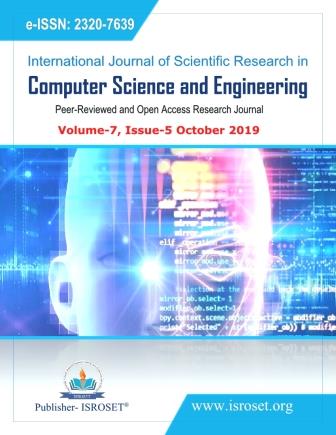Review on Techniques in Natural Language Processing
Keywords:
Natural Language Processing, Parsing, Modelling, POSAbstract
The field of Natural Language Processing (known as NLP) is a crossing point of the investigation of etymology, calculation and insights. The essential objective of NLP is computerized comprehension of the semi-organized language that people use. This investigation stems application in differing fields like semantic examination, rundown, content arrangement and such. The area characteristic language preparing is a juvenile space with no solid sign of when it will develop. Contrasted with entrenched areas like "Investigation of Algorithms", NLP is yet in its rising period and thus there`s lack of a compact bit of writing that expounds on the periods of NLP and records various systems that can be adjusted. NLP obtains intensely from primary subjects of concentrate like measurements, likelihood hypothesis and hypothesis of calculation. In this paper, we portray three periods of regular language handling in particular, language demonstrating, parts-of-speech(POS) labeling and parsing, plotting the methodologies utilized that can be utilized
References
Z. Youzhi,” Research and Implementation of Part-of-Speech Tagging based on Hidden Markov Model”, Second Asia-Pacific Conference on Computational Intelligence and Industrial Applications,IEEE pp. 26-29,2009.
K. Sarkar and V. Gayen,” A Trigram HMM-Based POS Tagger for Indian Languages”, Proceeding of International Conference on Frontiers of Intelligent Computing, pp. 205–212,2013.
J. Lafferty, A. McCallum, C.N. Pereira, “Conditional Random Fields: Probabilistic Models for Segmenting and Labeling Sequence Data”, 18th International Conference on Machine Learning, pp. 282-289 ,2001.
Z. Xiaofei,H. Heyan, Z. Liang, “The Application of CRFs in Part-ofSpeech Tagging”, International Conference on Intelligent Human-Machine Systems and Cybernetics,IEEE, pp. 347-350,2009.
N. Mishra, A. Mishra, “Part of Speech Tagging for Hindi Corpus”, International Conference on Communication Systems and Network Technologies,IEEE, pp. 554- 558,2011.
K. Nongmeikapama, S. Bandyopadhyayb,” A Transliteration of CRF Based Manipuri POS Tagging”, 2nd International Conference on Communication, Computing & Security (ICCCS), pp. 582-589,2012.
N.Adhvaryu, P.Balani, “Survey: Part-Of-Speech Tagging in NLP”, International Journal of Research in Advent Technology (E-ISSN: 2321-9637) , Special Issue , pp.102-107,2015.
D. Kumar, G.S. Josan,” Part of Speech Taggers for Morphologically Rich Indian Languages: A Survey”, International Journal of Computer Applications, Vol. 6, Issue.5, pp. 1-9 ,2010.
N. X. Bach, L.A. Cuong, N. V. Ha, N. N. Binh,” Transformation Rule Learning without Rule Templates: A Case Study in Part of Speech Tagging”, International Conference on Advanced Language Processing and Web Information Technology, IEEE, pp. 9-14 ,2008.
B.H.Wilson , G.S.Halford, G.Andrews , S.Phillips, “Catogarizing Cognition” , MIT , 2014.
D. Kumar, G. S. Josan,” Part of Speech Taggers for Morphologically Rich Indian Languages: A Survey”, International Journal of Computer Applications Vol. 6, Issue.5, pp. 1-9 ,2010.
Downloads
Published
How to Cite
Issue
Section
License

This work is licensed under a Creative Commons Attribution 4.0 International License.
Authors contributing to this journal agree to publish their articles under the Creative Commons Attribution 4.0 International License, allowing third parties to share their work (copy, distribute, transmit) and to adapt it, under the condition that the authors are given credit and that in the event of reuse or distribution, the terms of this license are made clear.







